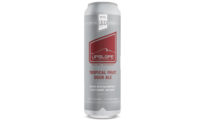Sour beers help market reach more consumers
Millennial consumers, on-premise will help niche beer style’s growth

Although the idiom on a sour note commonly is used in reference to an unpleasant situation, sour notes are having a pleasant impact on the craft beer market. As beer drinkers look for new, flavorful options, analysts note that sour beers are delivering.
“The tart taste profile is what differentiates sours from other beers,” says Eric Schmidt, director of alcohol research for New York-based Beverage Marketing Corporation (BMC). “Within sours you’ll find different styles such as lambics, which are lighter and mixed with cherry and raspberry and goses which are made with coriander and salt.”
Beth Bloom, associate director of U.S. food and drink reports for Chicago-based Mintel, highlights that sour beer’s potential lies within its ability to expand beer’s appeal and compete with other beverage alcohol categories.
“It provides opportunity to appeal for taste,” she explains. “Beer generally underperforms other alcohol options (wine, cocktails, ready-to-drinks) for taste. Sour offerings may provide a taste experience that’s more pleasing to some consumers. It provides the opportunity to appeal for variety. We know that craft beer drinkers pride themselves on trying a variety of beer types. So sour beer can give them another option for trial.
“Sour beer also provides the opportunity for expanding drinking occasions,” Bloom continues. “As compared to an easy-drinking light beer experience, sour beers are meant to be savored, so they might fit a food pairing or more formal beer experience. Finally, sour beers have the potential to appeal for health. Many of them are naturally fermented.”
Although sour beers offer the potential to expand the beer drinker base, Bloom notes that younger, legal-drinking-age consumers will be the most likely to opt for the tartier offering.
“Younger consumers are generally more interested in trying unconventional options,” she says. “I think it would depend on how the beer is marketed. A focus on more intense flavor and a focus on the elements of the style would appeal to more engaged craft beer drinkers, looking to try a range of options. However, if the focus is on a specific flavor, like fruit, it might widen the appeal to include less likely beer drinkers, and to women.”
Patrick Livingston, principal of alcohol insights for Chicago-based Information Resources Inc. (IRI) notes the success that sours have had but notes that it still remains niche for the market.
“The style is still very small among the craft beer segment, however, contributing just 0.3 share points to the $4.3 billion craft beer segment,” he says. “If sour beers continue to grow at this rate through the critical summer beer selling season, there is sizable potential for the future of this style, however, it is unlikely they will grow to rival leading styles, such as IPAs.” BI
Looking for a reprint of this article?
From high-res PDFs to custom plaques, order your copy today!






